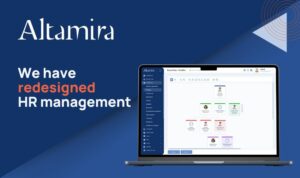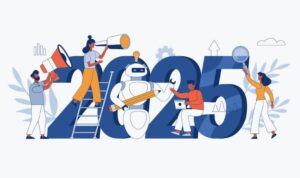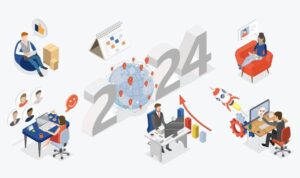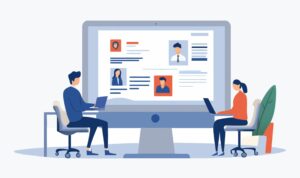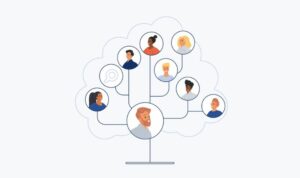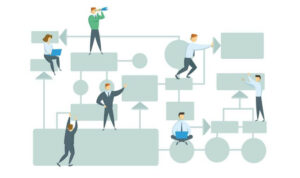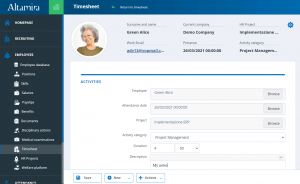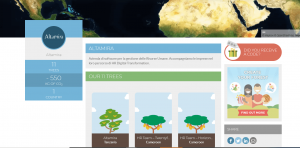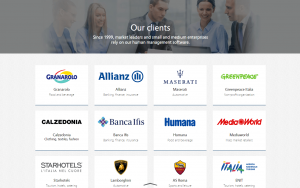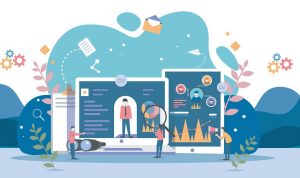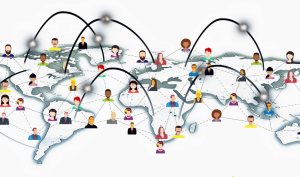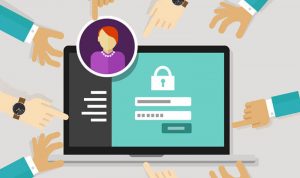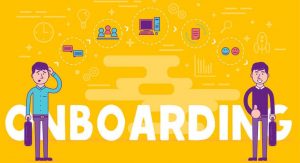The growth in remote working is affecting HR management activity.
HR managers are faced with the challenge of making human capital which is no longer in daily physical contact flourish. Processes, technologies and habits must be updated to ensure the same level of engagement and productivity and avoid the loss of the corporate climate built up over the years.
In order to tackle this change, Human Resources must mainly focus on 2 “enabling” tools: technology and interpersonal skills.
It may seem paradoxical, but the increase in distance is giving the human and interpersonal qualities of the HR department and managers an even more central role.
In practice, it is necessary to be able to replace all those precious occasional interactions that took place at the office: the meeting in the elevator, the chat in front of the coffee machine, the discussion with the person in the neighboring cubicle.
Only through constant interaction is it possible to maintain the unity of the company and its teams.
Accordingly, it is necessary to invest more time in interpersonal relationships, in interaction and in listening to the needs of employees. Otherwise, the problem of isolated “company silos” will become more and more serious.
To do this, HR managers can rely on digital tools, which have enabled companies to carry on with work and relationships during the lockdown in early 2020. The tool that became the symbol of this revolution was the video conference (it is no coincidence that Zoom saw enormous growth in revenue), but more generally, we saw the rise to prominence of cloud-based software.
From HRM software to CRM solutions, from ERP to Customer Support software, cloud-based applications have allowed employees to continue working as before even without having access to their office.
Therefore, for human resources departments that have not yet gone through a digitization process, the time has come to abandon Excel sheets and on-premise systems that do not allow interaction, sharing and collaboration, and become active promoters of the digital revolution in the company.
Here’s how a number of key HR processes can be optimized for remote work by leveraging the right technological solutions and focusing on personal interaction.
Employee search and selection
The spread of remote work is also having an effect on staff recruitment and selection.
The first challenge that those in charge of selection are facing is that of competition: the talent market has suddenly expanded in geographical terms – which means a larger pool of candidates, but also a strong growth in competition.
In this context, employer branding has an even greater strategic importance. Companies must be able to attract and persuade talent from all over the world, and without a well-defined strategy and investment in the most effective tools, they risk being constantly bested by other companies from all around the world.
The second challenge is the digitization of the selection process to limit the use of face-to-face interviews. As a result, the recruiting process, which now focuses on the use of an ATS, must be enriched with digital solutions to replace the face-to-face interview.
The main tool is the video interview – live and on-demand – which allows “meeting” a large number of candidates and evaluating their expressive and relational skills. But there is also an increasing use of gamification and tests of various kinds (language, psycho-aptitude, technical) to collect as much information as possible about a candidate in the pre-screening phase.
Onboarding
The first few months have a strong influence on an employee’s length of stay, which is why each company should set up an efficient onboarding process.
Managing the addition of someone new remotely is an even more delicate matter, especially if this is someone who has no previous work experience. In this case as well, it is necessary to make an extra effort, both from a relational and technological point of view.
Technology must be used to simplify the bureaucratic steps, replacing the tiresome exchange of paper documents with a digital workflow that will guide the new employee through the entire process. One must also take care to choose company software that is cloud-based and intuitive, so that the new employee can start using it immediately, accessing it via browser from the devices they have available and without the need for the IT department to intervene.
Personal support is even more important. The first step is to appoint a mentor, someone who will assist the new employee virtually and make sure they are not left in limbo. The second is to provide a training plan with a wide scope. If many different colleagues explain every aspect of the business to the newcomer, he or she will have a comprehensive view of the business processes – the tasks, needs, critical points and challenges of each department – and will have had the opportunity to meet a good number of their colleagues in one-on-one sessions. The third step is to arrange meetings to introduce the team as a whole and illustrate its dynamics.
Engagement
Stimulating employee engagement, creating a positive corporate climate and promoting the company culture are tasks that have become more and more important for the HR department.
They are also the most difficult objectives to pursue when employees are no longer in constant contact.
To achieve them, it is necessary to abandon the centralized management of Human Resources. Involving employees in the processes that concern them will increase engagement, transparency and efficiency.
Managers and HR managers will also have more time to intensify contacts with colleagues. In the absence of office interactions, regular meetings should be set up. For instance, agile management theories vouch for the importance of a short meeting at the beginning of the day in which each team member explains the progress made and the difficulties encountered.
It would be wise to maintain the old traditions and customs as well. A company-wide aperitif can be organized even if not all the employees are coming to the office every day.
Evaluation
The evaluation of employees has an even more fundamental importance in the remote management of human resources.
As they work far from the eyes of managers, executives and the human resources department, the staff can only be judged according to the results obtained.
Therefore, you should agree on SMART goals for all employees and monitor their achievement to have an up-to-date picture of the company’s health at your disposal and under your control.
For employees working from home, the goals are also a useful reference point, a guiding light that directs their work and guides their priorities. Accordingly, these goals must be thought out and established with great care (here are some tips on how to do this).

Skill assessment is also a useful activity as part of remote human resources management. Nowadays, it makes sense to focus in particular on those soft skills (autonomy, reliability, decision making) that are essential to working efficiently outside the office.
It is only by evaluating these skills that you can structure the organizational chart in the best way and intervene to fill any gaps through training.
Training
The spread of remote work is bringing not only benefits for employees and companies, but also a number of challenges and negative points. For instance, one of the widespread fears is that employee skills, both soft and hard, will develop at a slower pace outside of a dynamic environment like the office.
In order to compensate for this problem and take advantage of the increased time available to employees, companies should increase their investment in digital and on-demand training, allowing employees to explore the issues that are of interest to them at the time that best suits them.
In particular, microlearning and mobile learning will be a good resource for the future.
Attendance monitoring
When it comes to monitoring staff attendance remotely, companies who are doing things right will tend to choose one of the following two approaches.
The first is moving to a goal-based business management, where attendance is a mere formality for the purpose of setting up payroll. The employee doesn’t have conventionally-defined working hours, but “only” the responsibility of carrying out their activities.
In this case, attendance monitoring software is mainly used to request, approve and track holidays and leave days and to organize the data for the payroll software.
The second is monitoring attendance through virtual clock-ins and schedules that are as flexible as possible, but still tied to a predetermined number of working hours on a daily, weekly or monthly basis.

The first method has the advantage of offering maximum freedom and flexibility to the employee, while the second serves to ensure that they have clear boundaries between work and private life.
In this context, it is useful to recall that the European Court of Justice seems to have recently moved in the direction of the second method, urging EU member states to require employers to track employees’ working hours in order to ensure that the maximum number of working hours and the mandatory rest periods are respected and that overtime is accurately recorded.
It is possible to develop human capital remotely
By reviewing these and other HR processes with the support of technology and managing the relationships involved, the HR department will continue to develop staff skills even in this more complex context.
In particular, this represents a fundamental evolution for small and medium companies, which will make them more flexible, productive and competitive at the global level.
Copyright: ©Prostock-studio/Adobe Stock












